Art Fairs
Top 10 Booths at Art Basel in Miami Beach
From the looming work of Sanford Biggers to paintings by Asger Jorn, here's what to see.
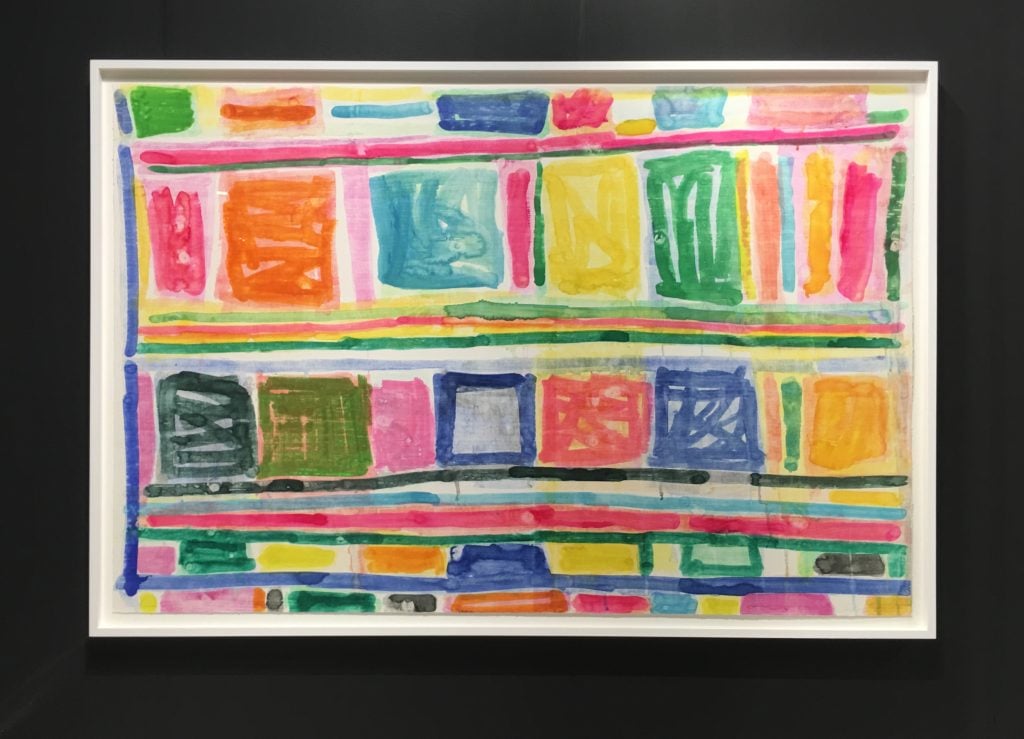
From the looming work of Sanford Biggers to paintings by Asger Jorn, here's what to see.

Rozalia Jovanovic

When Art Basel in Miami Beach opened its doors for its 2016 edition, it was clear the mood was a little different than in the past few years. “More quiet,” “more calm” were phrases we heard repeated on several occasions about the general atmosphere. Booths were less flashy than in recent years, and many, like Blum & Poe and Susanne Vielmetter turned out overtly political work. Nonetheless, from the galleries showing established artists to those whose focus is more on the emerging contingent, there was a variety of great work on view.
Here are a few of the ones that caught our eye.
1. Two Palms
As part of their Kabinett presentation, a small section of a gallery’s stand but separated from the main area of the stand, Two Palms showed a selection of monotypes by Stanley Whitney (see image above). Following up on his show at the Studio Museum in Harlem, the gallery commissioned Whitney to create 16 monotypes. It was their first time working with the artist. And while other booths at the fair had paintings by Whitney, including Berggruen and Lisson, the prints are selling for a moderate $20,000–$30,000. And there are even very small ones going for $4,500. The entire presentation was sold out by the first day.
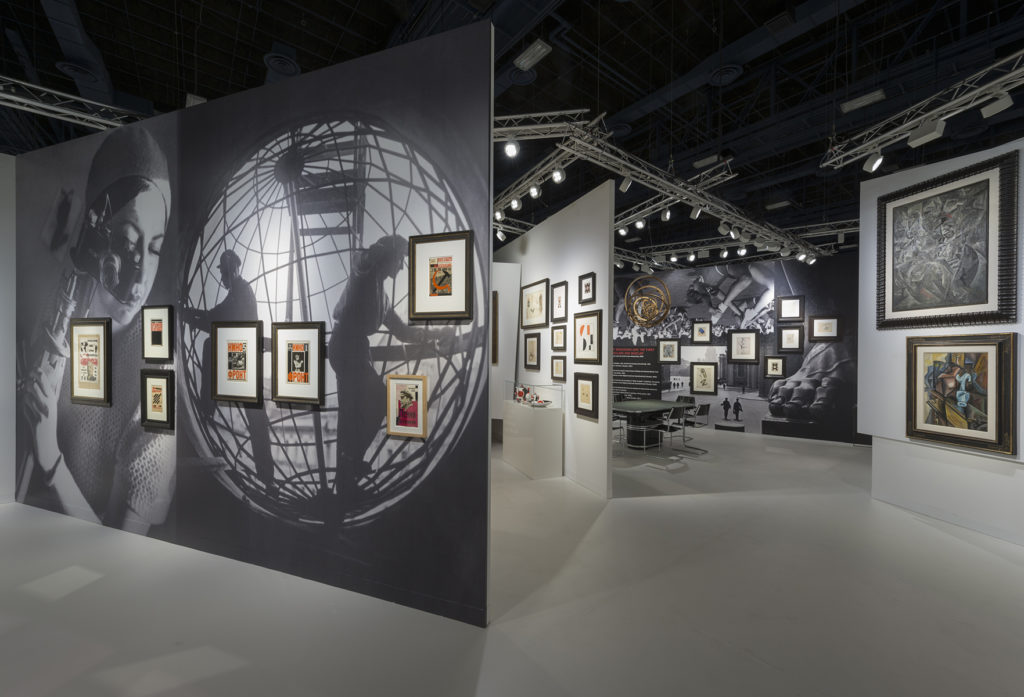
Galerie Gmurzynska’s Claude Ruiz-Picasso-designed booth at Art Basel in Miami Beach 2016. Courtesy of Galerie Gmurzynska.
2. Galerie Gmurzynska
In celebration of the 100th anniversary of the Russian Revolution, Switzerland’s Galerie Gmurzynska had a booth devoted to the work of the Russian avant-garde curated by Norman Rosenthal and designed by Claude Ruiz-Picasso. Showcasing work by Alexander Rodchenko, Sonia Delaunay, and Lyubov Popova among many others, the booth was an ode to Constructivist and Suprematist work. “There would be no Minimalism without Suprematism,” said Galerie Gmurzynska CEO Mathias Rastorfer. “Donald Judd, Richard Serra, Ellsworth Kelly all looked to it.”
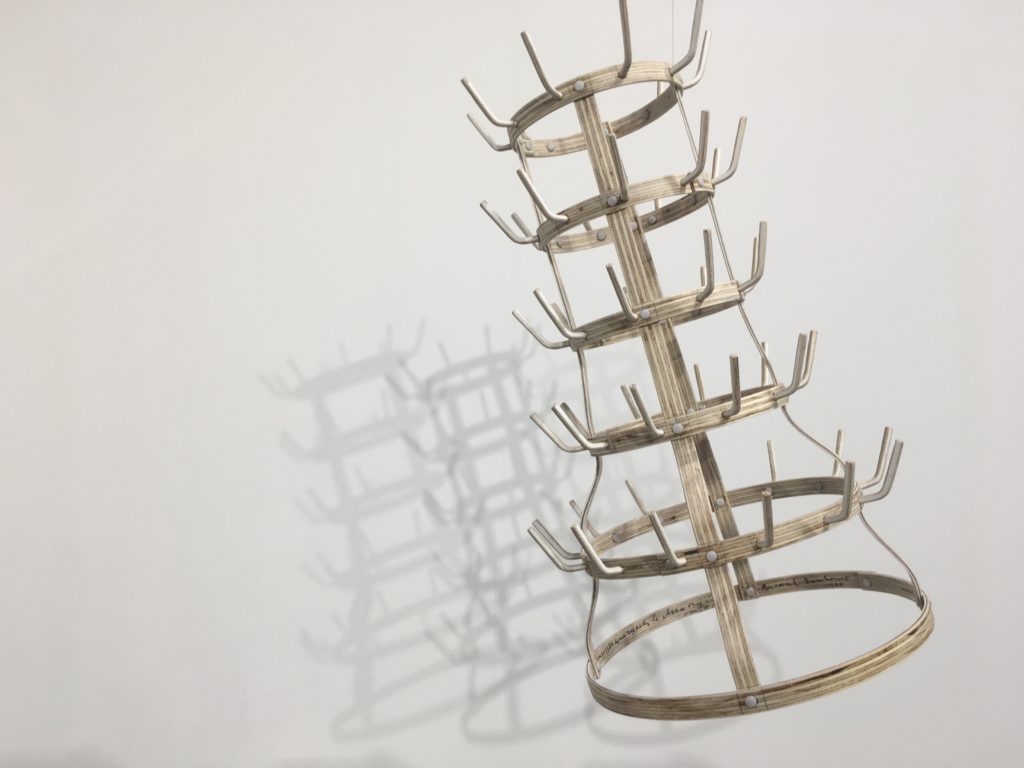
Tom Sachs, Porte Bouteilles (Bottle Rack) (2016).
3. Thaddeus Ropac
Created in response to Marcel Duchamp’s famous work of the same name that went on display at Thaddaeus Ropac, Paris, in October, artist Tom Sachs’s version is made of wood but to the exact dimensions of the original. Sachs’s version, which was going for $100,000, even carried Duchamp’s signature in the very same spot. Other works in Ropac’s booth included sculptures by Tony Cragg and Georg Baselitz, and a painting from James Rosenquist ranging in price from $500,000–$680,000.
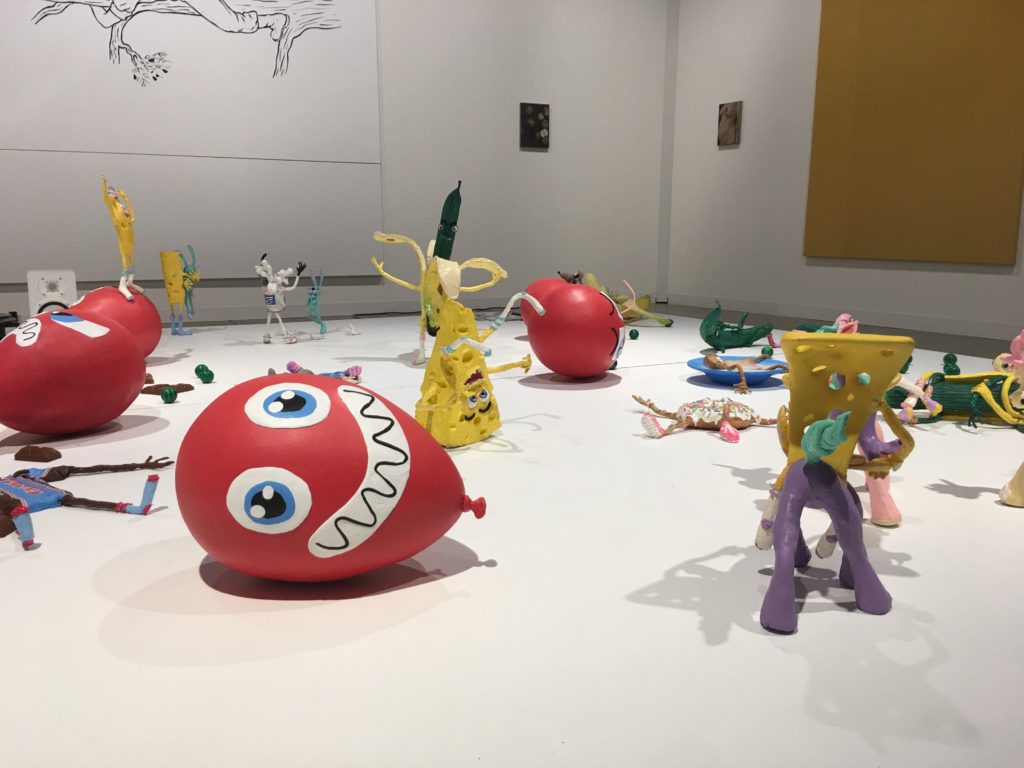
Installation view of Gio Marconi booth. Image courtesy of artnet News.
4. Gió Marconi
“It’s inside a mind that’s not completely healthy,” said artist Hans Berg about the large untitled 2016 installation he produced with Nathalie Djurberg (his artisitic collaborator who won the Silver Lion at the Venice Biennale in 2009), which took up the majority of Gió Marconi’s booth. “I also thought it was a bit of a child’s sexual awakening.” The installation, which also came with a slightly disturbing audio component, was commissioned by the gallerists, who had seen another recent installation by the artists in a sculpture park in Sweden.
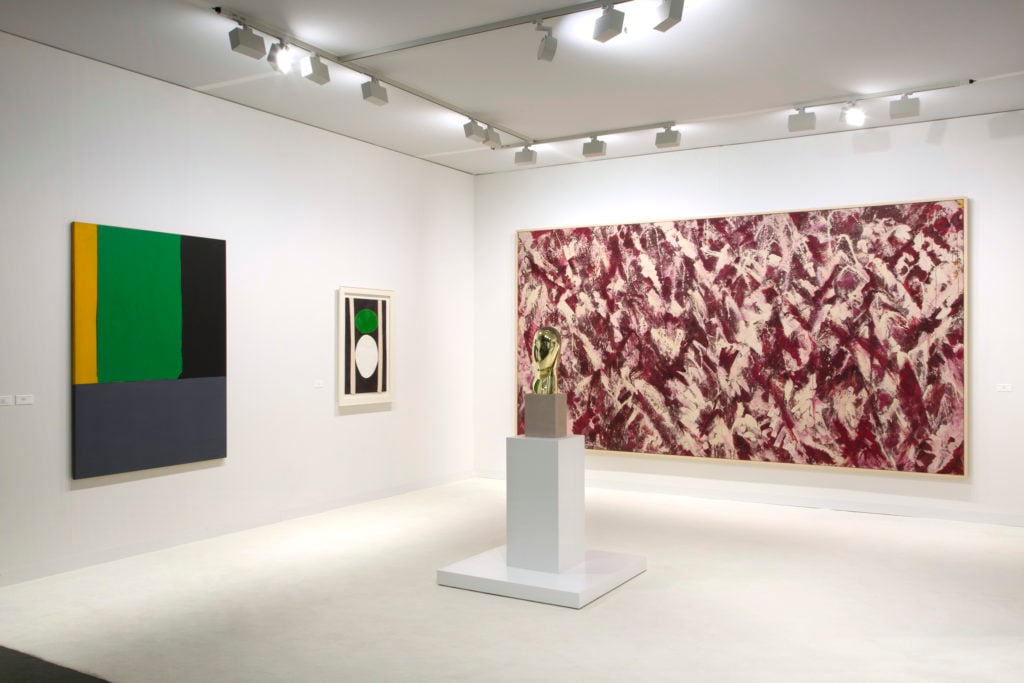
Installation view of Paul Kasmin booth featuring Lee Krasner’s Another Storm (1963) and Constantin Brancusi’s .Une Muse (1918). Photography by Dawn Blackman, courtesy of Paul Kasmin Gallery.
5. Paul Kasmin
Paul Kasmin’s booth featured a stunning painting by Lee Krasner (up for $6 million) coupled elegantly with a bronze work by Constantin Brancusi. The combination was killer. Enough said.
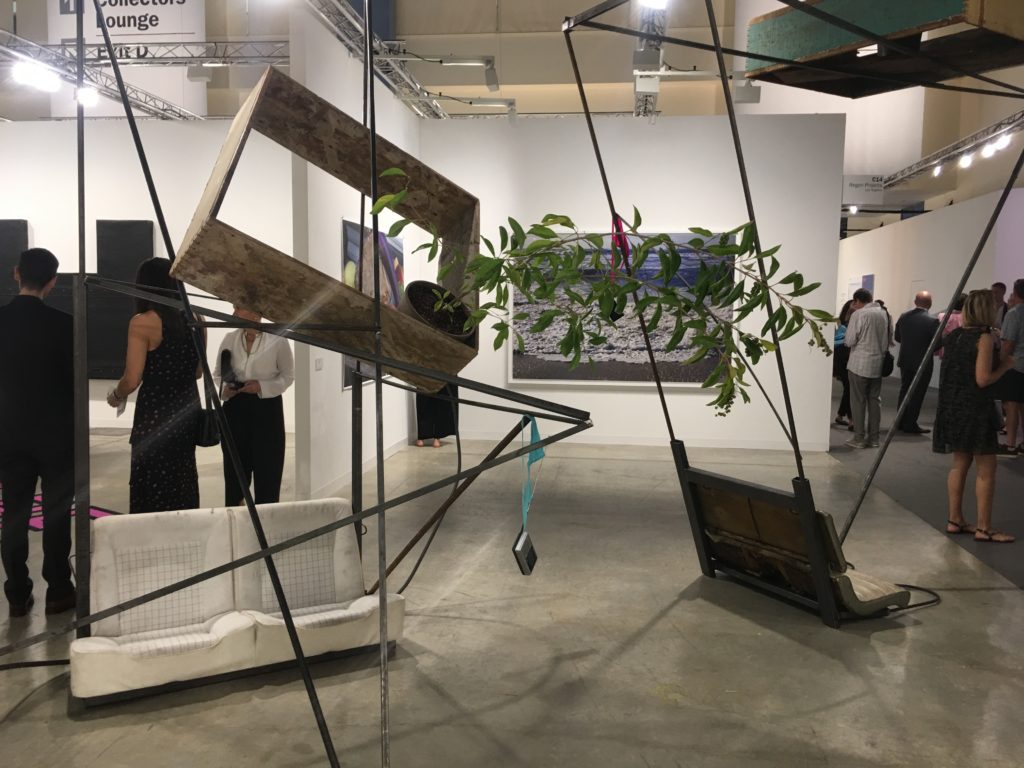
Abraham Cruzvillegas at Regen Projects. Image courtesy of artnet News.
6. Regen Projects
Regen Projects brought two impressive and light-feeling works by Mexican conceptual artist Abraham Cruzvillegas: Autoconcanción I and Autoconcanción II. The works, constructions that incorporate the back seats of cars and live plants, take inspiration from the memory that Cruzvillegas had while being driven in the back seat of a car as a child and incorporate elements from the model of cars his family owned. The works were also the subject of Cruzvillegas’s second solo outing with Regen Projects, in Los Angeles, in September. Check it out for an inspired turn at the fair.
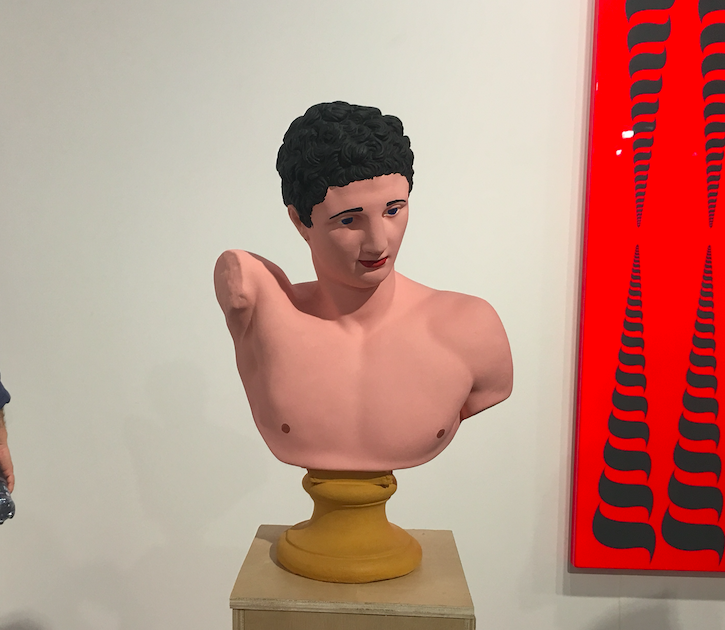
Installation view of Mehdi Chouakri’s booth featuring the work of Hans-Peter Feldmann and Charlotte Posenenske. Image courtesy of artnet News.
7. Mehdi Chouakri
A large modular cardboard structure by artist Charlotte Posenenske (1930–1985) dominates the booth of Berlin-based Mehdi Chouakri. Rejecting the commercial art market, the artist, who was active in the Minimalist movement in Germany in the 1960s, and whose work was recently included in a two-person show at the Chinati Foundation, made works in series that were thought of as mass-produced objects and sold at cost. The work in the booth is a modular construction made up of roughly 9 pieces that can be assembled into various combinations and are sold per piece (around $4,000 per piece). Her work was rediscovered, we were told by the gallerist in the booth, by Wolfgang Tillmans, who showed her work at his exhibition space Between Bridges in 2007. It was then shown that year at Documenta 12. Also in Mehdi Chouakri’s booth are a large series of postage stamps and a male bust by Hans-Peter Feldman as well as airbrush on aluminum paintings by John Armleder.

Sanford Biggers, Witness (2016). Courtesy of artnet News.
8. Marianne Boesky
Sanford Biggers’s Witness, a dark wall work composed of sequins, canvas, fabric, and tar, loomed menacingly over the booth of Marianne Boesky, and over the fair. Given the anxiety in the air, the work—which features a cluster of people rendered as mere shadows on the wall (or variously as dark dripping paint) and seemingly witness—given the political events of recent years—to some atrocity, was bound to create a strong impression. Unsurprisingly, the gallery reported two sales of Biggers’s work at the close of the first day of the fair. Tucked away in the booth were works by Frank Stella and Julia Dault.
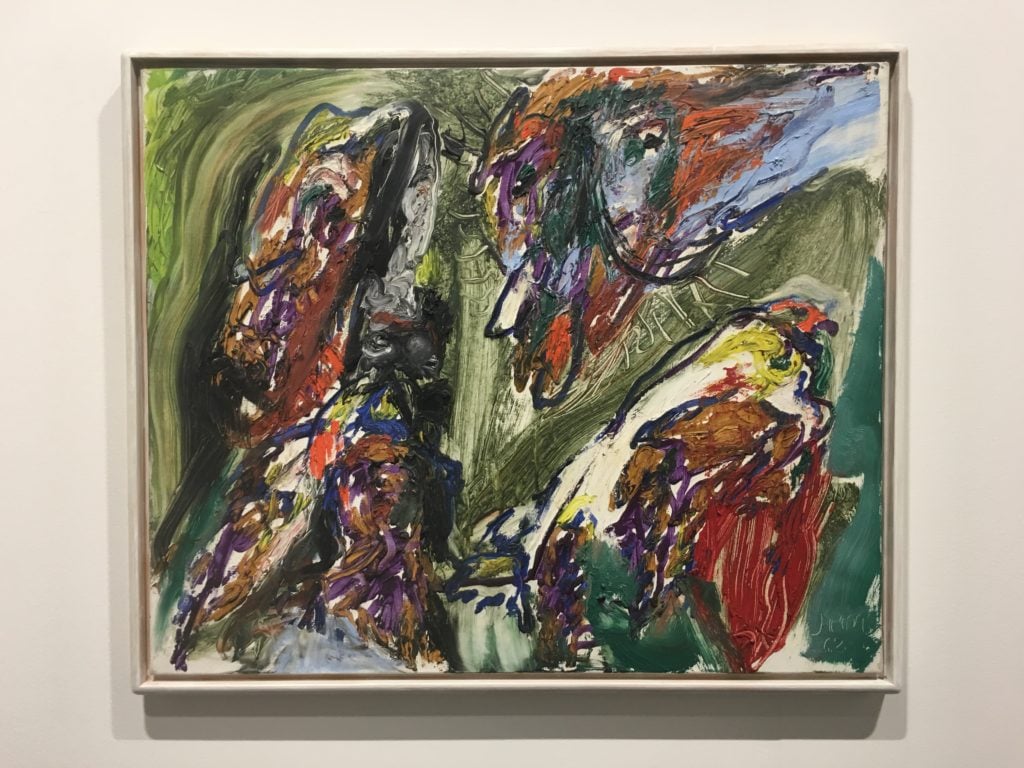
Asger Jorn, Le Destin s’Erase (Destiny is Crushed) (1962). Image courtesy of artnet News.
9. Petzel
Petzel featured a captivating series of paintings by Asger Jorn (1914–1973), a founding member of the avant-garde COBRA movement and the Situationist International. It’s surprising that the Danish artist’s sole retrospective at a major museum was in 1982 at the Guggenheim. Also in the booth is a large geometric painting by Cuban-American artist Jorge Pardo.
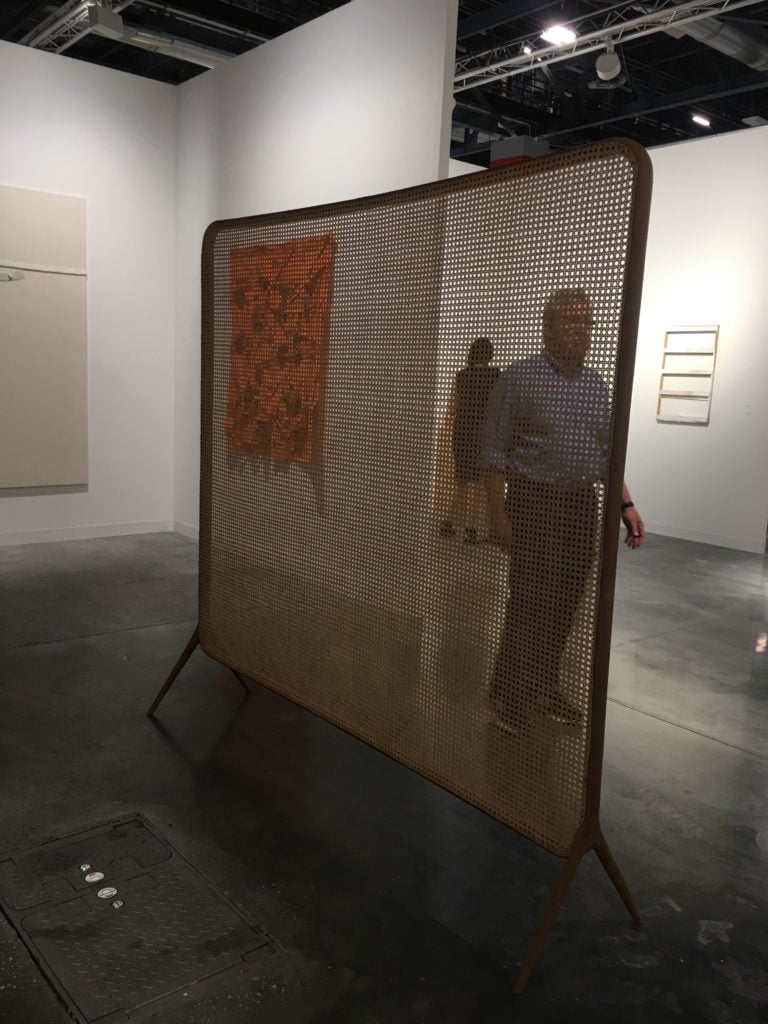
Installation view featuring work by Leonor Antunes at Luisa Strina. Image courtesy of artnet News.
10. Luisa Strina
The Sao Paulo-based gallery Luisa Strina presented Screen (2015) a subtly striking work by Leonor Antunes that took its effect not so much from the object itself—a screen composed of natural materials (woven rattan and teak)—but in the way that the sculptural form divided the space and seemingly choreographed the movement of the people walking around it. It’s a welcome invitation for the viewer to take a moment and look beyond the surface.